(tomando prestado el espacio de la comunidad de Flor)
Quiero intentar responder con este artículo qué visitar en Buenos Aires, qué ver en poco tiempo, para viajes cortos (unos pocos días). Conociendo gente de otros lugares –de viaje, o viviendo en el exterior– más de una vez me han preguntado por la Patagonia y mil otros lugares de nuestro hermoso país. Por las distancias a recorrer vamos a dejarlo para más tarde, en otro artículo sobre viajes más largos visitando Argentina (y siendo sincero, mucho no conozco).
Viví 24 años de mi vida en el corazón de la ciudad y en un barrio icónico como es Recoleta (y un par de años de independencia en Flores). Buenos Aires tiene muchísima riqueza y las recomendaciones genéricas nunca me fascinaron, así que si tienes un interés particular recomiendo dejar un comentario aquí debajo para poder dar una respuesta personalizada a tus intereses. Por ejemplo, a algunas personas le gustan más la fotografía, a otros el arte callejero, a algunos la comida, y a otros la arquitectura.
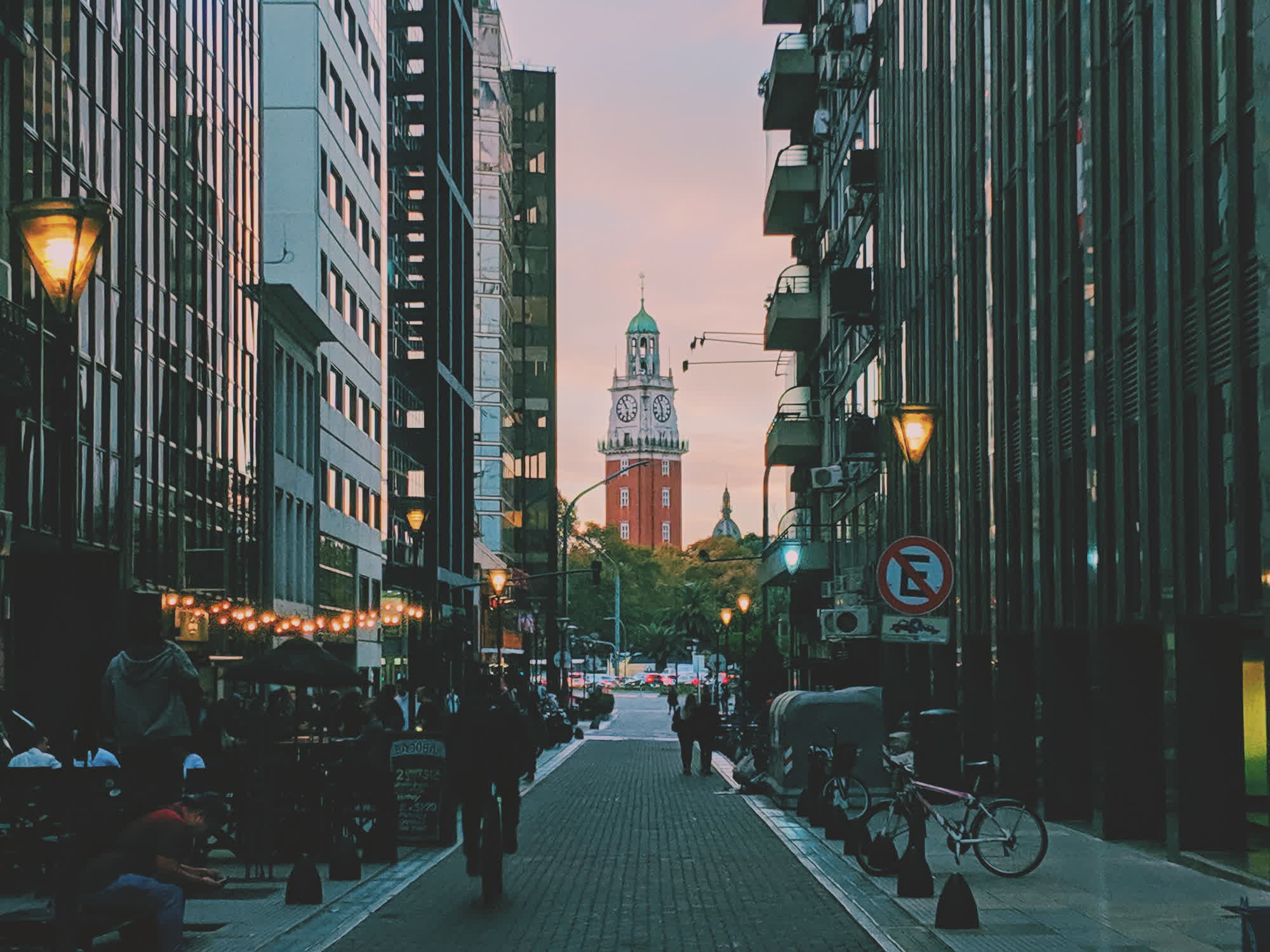
Consejos generales
- Transporte: para el turista promedio, la ciudad resulta barata dada la diferencia monetaria entre el peso argentino y el dólar. El transporte público está subsidiado por el gobierno, y al momento de escribir este artículo, tanto un pasaje de subte (o metro) como de colectivo (bus) cuestan debajo de 1 dólar estadounidense, y se usa un sistema de tarjeta sin contacto recargable que puede ser adquirida en kioskos o golosinerías, o en las estaciones de subte (se llama tarjeta SUBE). Uber y taxi son también opciones viables (recomiendo Uber por precio y seguridad).
- Seguridad: los puntos que mencionaré se consideran seguros por el afluente turístico, pero nunca está de más aconsejar prestar atención tanto a los autos y colectivos que pasan, como a los bienes personales. Es frecuente ver gente con sus bolsos y mochilas puestos en el pecho en vez de la espalda para no perderlos de vista nunca. Asimismo recomiendo usar una cámara barata –nada de fotografía profesional, al fin y al cabo son ¡vacaciones!- en vez del celular (o un celular no muy caro) e intentar vestirse con ropa cómoda (nada de pantalones khaki o chalecos de fotógrafo con mil bolsillos). Con estar atento y evitar ciertas zonas alcanza para tener paz mental. Se reduce a una regla de oro: usa lo que no te importe perder.
- Comida: como en cualquier lado, se puede comer desde muy barato dependiendo cuán frugal queramos ser. La comida rápida es considerada «de lujo» por lo que quizás la persona promedio visitante a estos locales, no es el mismo que en otros países. Pero vamos, si estás en Argentina, recomiendo evitar las cadenas y comer comida auténtica (bueno… más bien influenciada por españoles e italianos: carnes, empanadas, pastas, pizza).
- Dinero: si bien alguno que otro local aceptará dólares, la moneda corriente es el peso. En el aeropuerto no hay buenos cambios (es sabido) así que recomiendo cambiarle a un conocido, o ir a un banco en la ciudad (o si su hotel les permite cambiar con ellos).
El recorrido
Está basado en actividades gratuitas y que pueden ser completadas en un sólo día (¡a levantarse temprano, eh!) – si no te gusta mucho caminar, o bien amas tomarte tu tiempo mientras recorres la ciudad, puedes extenderlo en más tiempo, completándolo en un par de días.
Primer caminata: San Telmo, Puerto Madero y Microcentro
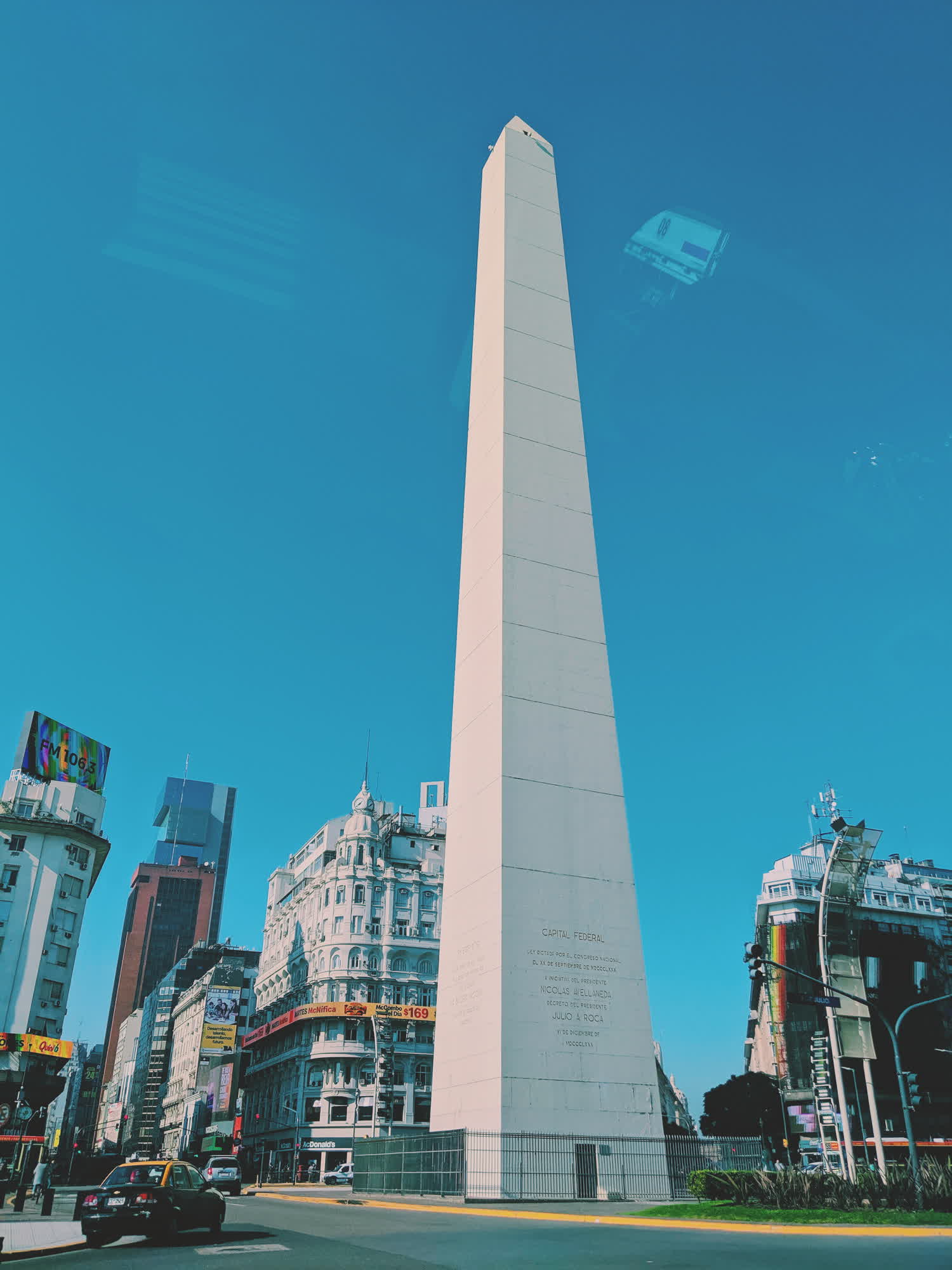
- Comenzaremos por un sitio icónico de la ciudad: Caminito. Lleno de casas de colores que supieron ser de los inmigrantes de 1900, hoy es un museo al aire libre con artistas callejeros. Para llegar, hay varias líneas de bus (la mejor opción es usar Google Maps) y en bus (líneas 29, 64 y 152) nos iremos al siguiente punto:
- La feria de San Telmo entre la Plaza Dorrego y la calle Defensa. Aquí se encuentran opciones para comer, y muchas tiendas de antigüedades. Los fines de semana la plaza se convierte en una feria con vendedores callejeros.
- Desde allí comienza el primer tour para caminar, con una distancia de 3 millas o 5 kilómetros (se puede hacer en menos de 2 horas) total. Por la calle Defensa hacia el norte, encontramos Avenida Independencia, por la cual «bajaremos» a Puerto Madero. En la esquina de Paseo Colón, veremos a nuestra derecha la Facultad de Ingeniería de la Universidad de Buenos Aires.
- Siguiendo hacia el este nos toparemos con la avenida Alicia Moreau de Justo, donde se encuentra la Universidad Católica Argentina, en edificios de ladrillo que supieron ser parte del viejo puerto de Buenos Aires, hoy renovados.
- Lo que seguramente aquí les llame la atención sea la mezcla entre lo viejo y lo nuevo, los edificios pequeños que cambiaron su utilidad con los años, y los inmensos rascacielos que aún se están construyendo. Si cruzamos la dársena, y caminamos una cuadra más al este, nos encontramos con uno de los espacios verdes más nuevos de la ciudad: la plaza Mujeres Argentinas. Puerto Madero tiene la particularidad de tener en todas sus calles y avenidas nombres de mujeres, una hermosa idea.
- Volviendo hacia la dársena, caminaremos sobre el Puente de la Mujer, diseñado por el majestuoso arquitecto español Santiago Calatrava, quien ha diseñado numerosas estructuras, incluyendo el Oculus de New York ¿reconocen la inspiración?
- Subiendo ya sea por el norte o por el sur, hacia el oeste veremos la parte de atrás (hoy parque) de la casa de gobierno también llamada Casa Rosada. Se hacen visitas guiadas para los fanáticos de los museos. La mayor parte de lo caminado hasta aquí es terreno ganado al mar. La Casa Rosada supo ser un fuerte desde donde defender a Buenos Aires para luego ser aduana del puerto y finalmente convertirse en casa de gobierno (donde el presidente trabaja, pero no habita).
- Si caminamos por Plaza de Mayo, veremos que se abren dos avenidas en diagonal, con nombres de ex presidentes: Roque Saenz Peña y Julio A. Roca (el de los billetes de $100 que no son Evita Perón) – elegiremos la norte, desde la cual vemos a lo lejos el Obelisco, sobre la avenida 9 de Julio (día de la Independencia Argentina) que es considerada la avenida más ancha del mundo teniendo en cuenta con 14 carriles y un ancho de 110 metros.
- Dos cuadras más al norte, terminaremos el primer recorrido con otra estructura que contrasta su arquitectura y diseño con el resto de los edificios modernos de la ciudad: el Teatro Colón, construído en 1857 es una opera que se usa para conciertos y eventos importantes, y considerado uno de los mejores 5 lugares para concierto del mundo, por la particular acústica de su interior. Aquí también se hacen visitas guiadas, con un valor de USD 15.
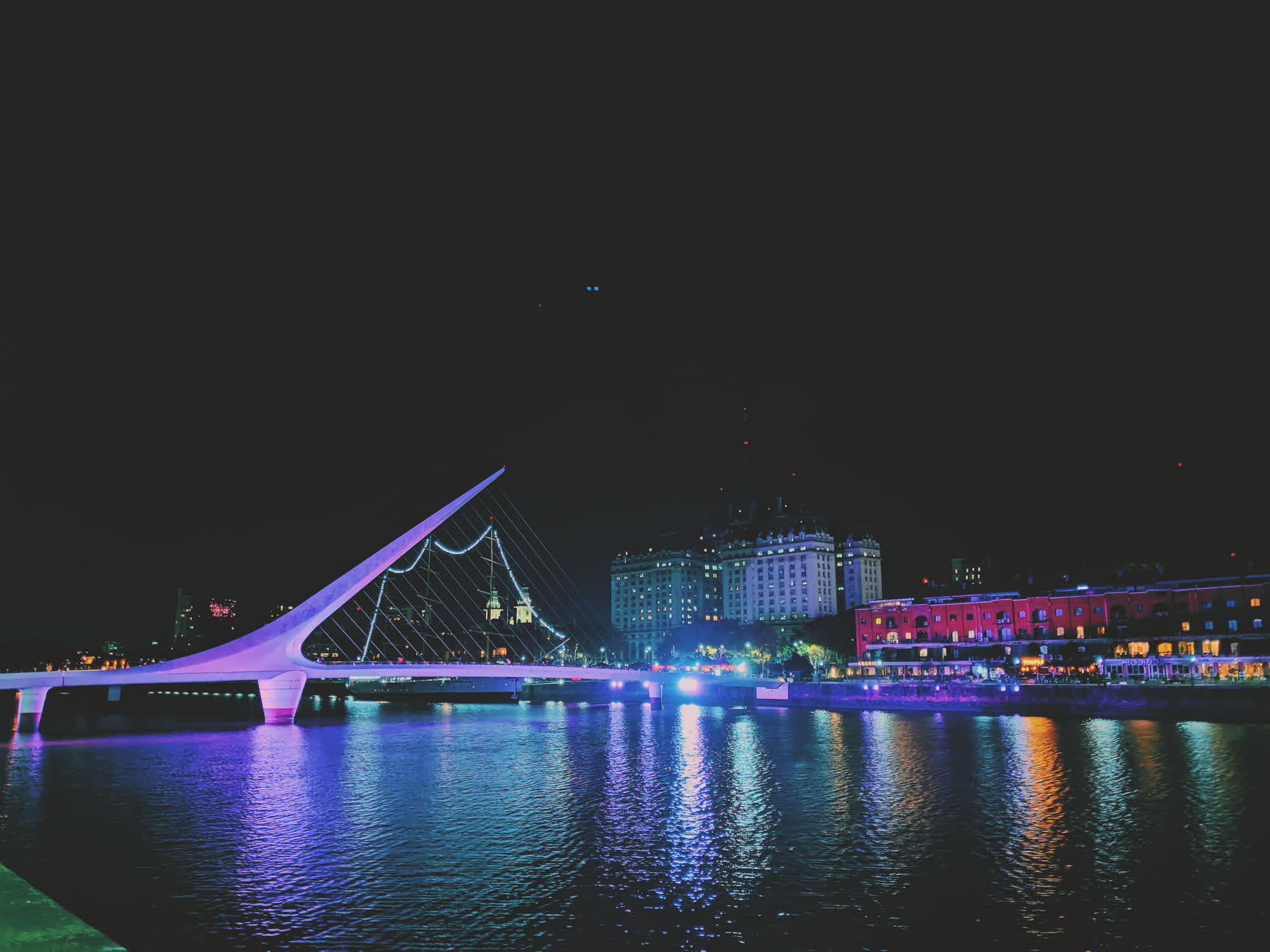
Antes de comenzar la segunda caminata del día, quería hacer una especial mención a un lugar, hoy librería, que supo ser un teatro y un cine: El Ateneo Grand Splendid. Para los amantes de los libros y la fotografía, es realmente una visita obligatoria, y se encuentra de camino entre el teatro Colón y la primera parada del siguiente recorrido.
Segunda caminata: Recoleta y Palermo
- Este recorrido cubre una distancia de 4 millas o 6.4 kilómetros, y se puede hacer en unas 3 horas de paseo tranquilo.
- A cada lado de la calle Quintana hoy se encuentran negocios y canteros. Recoleta se caracteriza por su tono rico, en historia y capital. Es uno de los barrios más viejos de la ciudad, y aún se encuentran mansiones (sobre la calle Alvear) de época. A la distancia se divisa la Catedral Basílica Nuestra Señora del Pilar, definitivamente uno de los edificios más viejos de la ciudad, construído en 1681 (y aún cuenta con algunas inscripciones en castellano antiguo en sus paredes que datan de 1700). Anexo tiene el Cementerio de La Recoleta (visita gratuita), donde se encuentran las tumbas de próceres argentinos y también de familias ricas. La Catedral cuenta con un museo-claustro que puede ser visitado, pero es pago.
- Caminando hacia el norte, el gran espacio verde se llama por porteños «Plaza Francia» y los fines de semana se viste de feria. Un shopping mall y centro cultural se encuentra en el medio de la plaza. Cruzaremos las avenidas Libertador y Alvear para ver, a nuestra izquierda el Museo Nacional de Bellas Artes y en frente la Facultad de Derecho de la Universidad de Buenos Aires, con cierto parecido a la de Ingeniería mencionada anteriormente.
- Caminando por la avenida sobre la que se encuentra la Facultad, hay una flor especial, hecha de acero: Floralis Genérica. Diseñada por Eduardo Catalano (arquitecto argentino de algunas secciones del MIT) intenta inspirar la esperanza de renacer cada día, y se abre durante el día y cierra durante la noche. Ideal para ver en el atardecer.
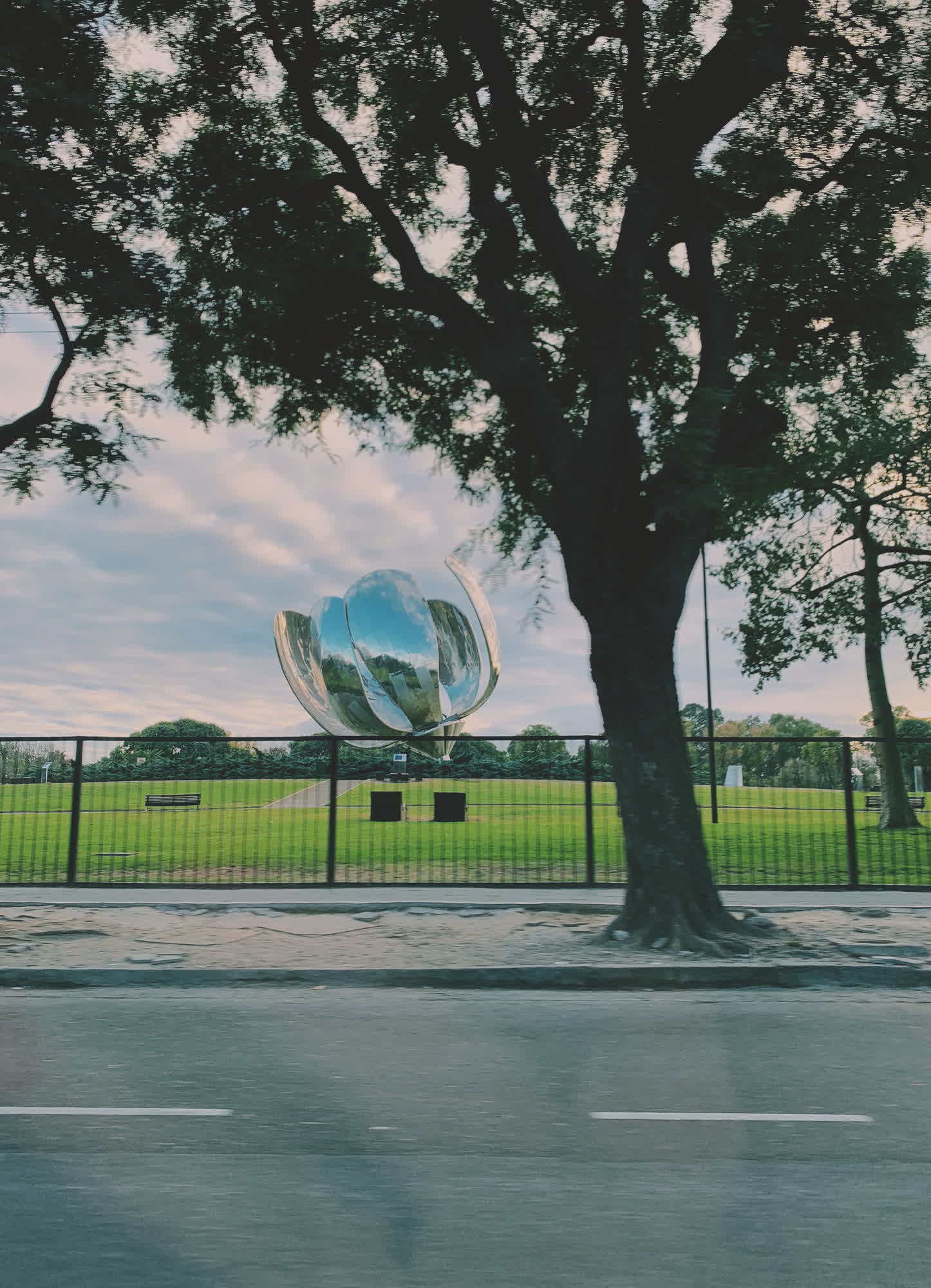
- Sobre la Avenida Libertador, se encuentran varias embajadas y espacios verdes, como así también el Museo del Automóvil Club Argentino, y por ser una zona bastante segura y verde, muchos corredores la aprovechan cada día. Más adelante, veremos el Jardín Japonés, que si bien es pago, si tienen más de un día en Buenos Aires, vale la pena entrar.
- Donde se cruzan la Avenida Sarmiento y Avenida Libertador (intersecciones grandes y semáforos lentos si los hay) tenemos: en el medio, el Monumento a los Españoles, en una esquina, el antiguo jardín zoológico de Buenos Aires hoy convertido en parque, la embajada de los Estados Unidos y más al norte, «Los Bosques de Palermo», donde nuevamente hago una excepción en esta guía y los recomiendo solamente si te quedas varios días en Buenos Aires. Es el espacio verde más grande de la ciudad y contiene lagos y hasta un Planetario muy bonito que se ilumina de noche.
- Andaremos por Avenida Sarmiento, alejándonos del río (y aeropuerto de la ciudad) hasta Plaza Italia, puerto de tránsito para muchísima gente que vive en la zona norte, fuera de la ciudad. Yo considero Plaza Italia como la puerta a Palermo, un barrio de mucha transición y tan grande, que hay otros barrios pequeños dentro: Palermo Viejo, Palermo Chico, Palermo Soho y Palermo Hollywood (estos dos últimos, inspirados en NY, supieron ser barrios residenciales y vieron un crecimiento en valor que los transformó un poco más comerciales)
- Por la calle Armenia, llegamos a la Plaza Armenia, que también cuenta con una feria los fines de semana, y decenas de locales de comida en la zona. A escasas 4 cuadras se encuentra una plazoleta pequeña, en honor a Julio Cortázar, reconocida popularmente como «Plaza Serrano» donde la gente joven de la ciudad se junta a tomar y comer algo con amigos, cada día de la semana.
- Aquí termina el recorrido, dejándolos elegir donde comer y beber, para terminar un día intenso (si hicieron todo hoy) en Buenos Aires. Ya pueden decir que conocen la ciudad.
Lugares que recomiendo para comer en Palermo:
- Social La Lechuza (Uriarte 1980, para parrilla y comida típica argentina),
- Il Ballo Del Mattone (Gorriti 5737, para pastas) y
- Parrilla La Cabrera (Cabrera 5099, para carnívoros, asado argentino y vino)
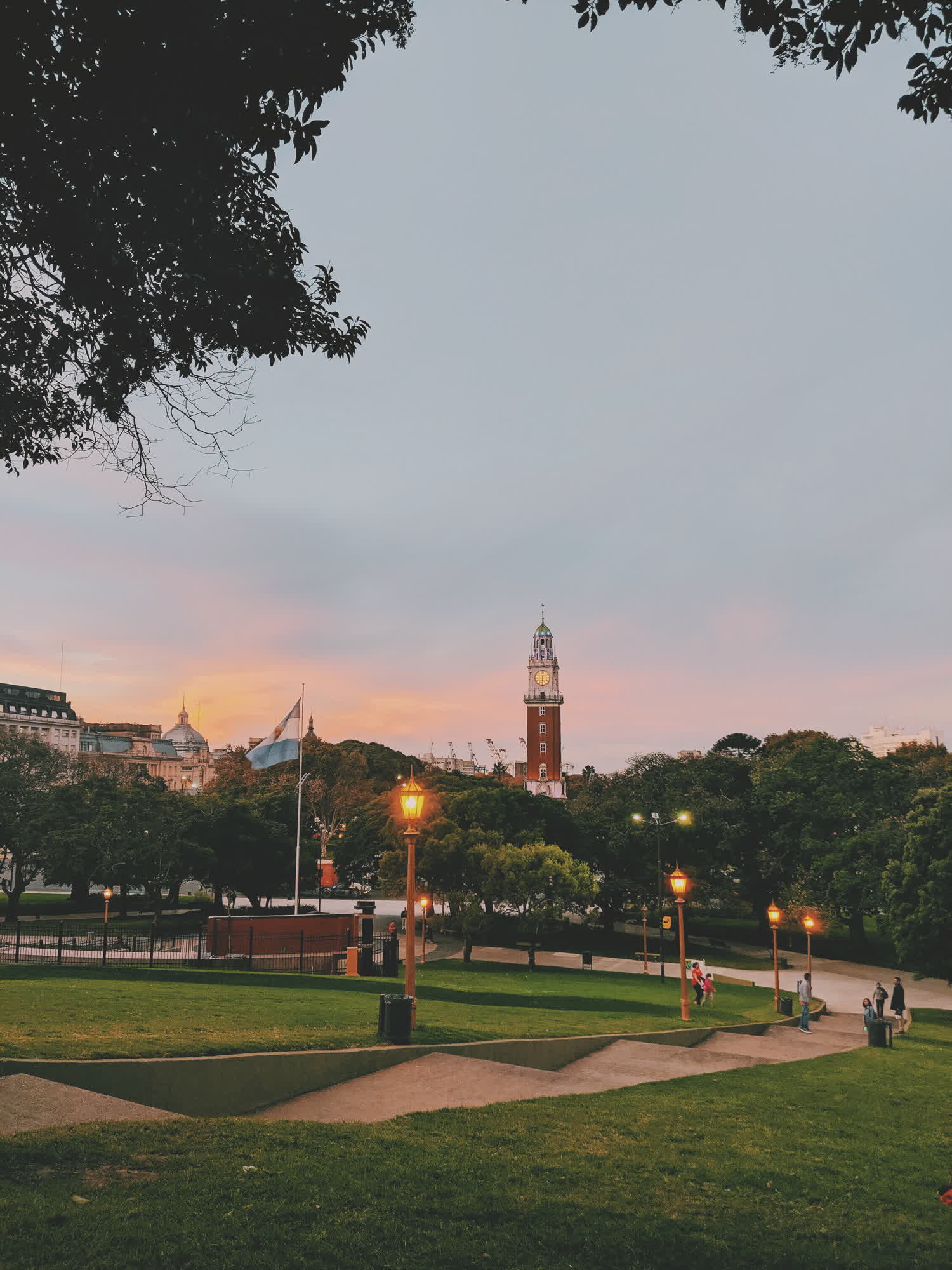
——————
I’m going to try answer in this article what to see and visit in Buenos Aires in a short trip (a single day or a few days.) Knowing people from all over the world, more than once I’ve been asked about Patagonia and a thousand other places of my beautiful country. Due to distances I’ll leave that for another time, about longer trips visiting Argentina (and being honest, I don’t know that many places.)
I’d lived 24 years in the heart of the city, and in such an iconic neighborhood like Recoleta is (and a few years in Flores, a residential one.) Buenos Aires has so much richness and I was never fond of the generic recommendations, so if you have any sort of particular interests, I’d recommend leaving a comment below so I can provide a good answer. For example, some people like photography, others street-art, others are foodies and some love architecture.
General advise
- Transportation: for the average tourist, the city results very cheap, due to the inflation between Argentine peso and U.S. dollar. Public transportation is subsidized by the government on top of that, and as of 10/23 both subway and bus tickets cost less than a dollar each (less than 50 cents actually.) Both subways and buses use a contactless card named SUBE, it’s rechargeable and you can get it in subway stations and some grocery stores. Uber and taxi are obviously also options, and I personally recommend Uber since taxis tend to scam people that don’t speak Spanish.
- Safety: all of my recommendations are safe spots due to tourists volume, but it never hurts to pay extra attention, both to traffic and to your own belongings. It is very common to see people with their bags in front of themselves, instead of back, in order to never lose sight of them. Furthermore, I recommend either using a cheap phone, or using a compact digital camera to take pictures — none of that professional DSLR sh*t, in the end it’s supposed to be vacations! I also suggest wearing comfortable clothes and avoiding khaki pants or the typical photographer vest with a thousand pockets. Rule of thumb: don’t wear/bring anything that you care too much if you lose it.
- Food: like anywhere else, you can eat super cheap depending how frugal you want to be. Fast food chains are considered a luxury, so you may see a different average Joe than what you are used to, for example in the United States. But come on, it is Argentina, what are you even doing? local food is just amazing (well, not really local: influenced by Italians and Spanish, it’s meat and pasta heavy)
- Money: even though some stores accept dollars, the currency is peso. The airport obviously doesn’t have a good exchange ratio (known) so I recommend going to an actual bank in the city (or check with your hotel concierge if you have one and they do exchange) — you can check the rates at the newspaper LaNacion.com
The route
It is based in free activities and that can be completed in a single day (gotta wake up early!) If you are not fond of walking or either you prefer to take your time while walking the city, you can extend the time and complete the guide in multiple days.
First walk: La Boca, San Telmo, Puerto Madero and Downtown (Microcentro)
- Let’s start with an icon of the city: Caminito. Full of colorful houses that used to be from the early 1900’s immigrants, it is nowadays an open air museum with street artists and performers. To get here, there are multiple bus lines (Google Maps has them all) and it is in a bus (lines 29, 64 or 152) that we’ll go to the next place:
- The feria de San Telmo (San Telmo neighborhood fair) between Plaza Dorrego and Defensa street. Here you can find lots of options to eat, and plenty of antiques stores. During the weekends, the park becomes a street fair.
- Here we start our first walking tour, with a total distance of 3 miles, doable in under 2 hours. Walking north on Defensa, we’ll find Independencia Avenue, on which we’ll go east to Puerto Madero. In the corner of Paseo Colón Ave, we can see to our right the Engineering Faculty of Buenos Aires University.
- Going further east, we will reach Alicia Moreau de Justo Avenue, where we can see the Argentine Catholic University buildings, made out of brick, and repurposed since they used to be part of the former port and customs of Buenos Aires.
- What will probably catch your eye will be the mix between the old and the new, the small repurposed buildings and the huge sky-scrappers that are still being built on the other side of the river. If we cross the river, and walk one more block east, we’ll find one of the newest parks of the city: Mujeres Argentinas (Argentine women.) Puerto Madero has the peculiarity of having every single street and avenue named after women, what a beautiful idea.
- We can walk our way back over the docks through Puente de la Mujer (Women’s Bridge) designed by the amazing architect Santiago Calatrava, who also has designed the Oculus in New York City, could you relate both?
- Going back west, we can see the backyard of the government house, also named Casa Rosada (Pink House) due to its walls colors. There are guided tours there, for the museum and history fans. Most of what we walked up until now, is filling over the river. The Casa Rosada used to sit on the river, being a defense fort first and then the city customs. It is now where the president works (like the white house) but he doesn’t live there.
- Two blocks northern, we will end this first trek with another structure that contrasts with its architecture and design from the rest of the modern buildings of the area: the Colon Theater, built in 1857 it is an opera used for concerts and important events, considered one of the best 5 places in the world for music concerts, due to the interior acoustics. There are guided tours here for about USD 15.
Before starting the second walking tour of the day, I wanted to mention a special place, nowadays a book store, that used to be a theater: the Ateneo Grand Splendid. For those book and photography lovers, it is really a must do, and it is on its way between Colon Theater and the first stop in the next tour.
Second walk: Recoleta and Palermo
This tour will cover 4 miles, and can be done in 3 hours at an easy pace.
- To each side of the Quintana Avenue, there are shops and boulevards. Recoleta is known for the rich people and for the history of the neighborhood, being one of the oldest in the city. There are still a few mansions on the Alvear Avenue (one of them became the Park Hyatt.)
- From Quintana, you can see the Cathedral-Basilica of Our Lady of the Pillar, definitely one of the oldest buildings in the city, built in 1681 still has some wall inscriptions in old Spanish dating from 1700s. Next to it there is the Recoleta Cemetery (free to enter,) where the historical heroes of the country remain, and also some rich families. The Cathedral has a cloisters museum that can be visited for a fee.
- Walking north, this huge green space is named by Porteños as “Plaza Francia” (France Park) and during the weekends it becomes a hippies fair. There is also a shopping mall y Cultural Center in the middle of the park. We’ll go over avenues Libertador and Alvear to see, on our left the Fine Arts Museum, in front of us the Law Faculty of the University of Buenos Aires, with a resemblance of the Engineering building, mentioned before.
- Walking on the avenue the University is, there’s a special flower, made out of steel: Floralis Generica. Designed by Eduardo Catalano (argentine architect, who also designed some MIT campus buildings) it tries to inspire the hope of reborn every day, by opening during the day, and closing at night. Ideal for watching during sunset hours.
- On Avenida Libertador, there are multiple embassies and green spaces, and given it is a very safe zone, a lot of runners and bikers take advantage of it every day. Further north, it is the Japanese Garden of Buenos Aires, and although it’s not free, I recommend visiting it if you are more than a day or two in Buenos Aires.
- Where Sarmiento and Libertador avenues cross, we have: in the middle, the Spanish Monument, in one of the corners, what used to be the Buenos Aires zoo (now a park,) in another one the U. S. A. Embassy, and to the north, what is considered to be “Los Bosques de Palermo” (Palermo Woods) where once more I make an exception in this guide, and recommend visiting only if you are multiple days in the city. It is the biggest green space in the city and has some lagoons, wildlife and even a Planetarium, that lights up during the night.
- We’ll walk south on Sarmiento Avenue, going away from the river and the city airport, towards Plaza Italia, transit port for many people that live north of the city. I consider Plaza Italia as the entrance to Palermo, a neighborhood with a heavy transition and so big, that other smaller neighborhoods are distinguished inside: Palermo Viejo (Old), Palermo Chico (Small), Palermo Soho and Palermo Hollywood (these last two, inspired in London/Los Angeles, used to be residential areas and became commercial after they went up in value)
- On Armenia street, we will arrive to Plaza Armenia, that also becomes a fair during the weekends, and is surrounded by food venues. Only 4 blocks separated this one from a very tiny park, in honor to Julio Cortazar and locally known as Plaza Serrano, where young crowds get together to eat and drink every day of the week.
- Here ends the tour, leaving it up to you where to drink and eat, to finish an intense day (if you did everything today) in Buenos Aires. You can now say you know the city.
Places I do recommend to eat in Palermo:
- Social La Lechuza (Uriarte 1980, for Argentine food),
- Il Ballo Del Mattone (Gorriti 5737, for pastas) y
- Parrilla La Cabrera (Cabrera 5099, for meat lovers, Argentine wine and Asado)